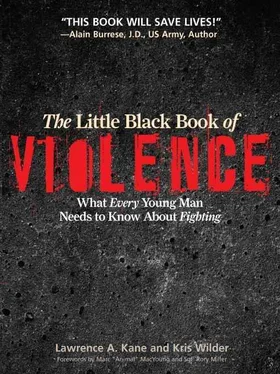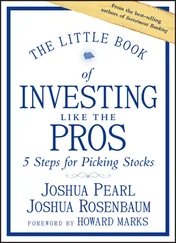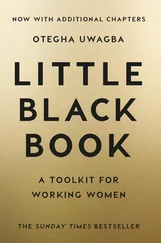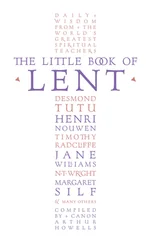• Grossman, Dave and Loren Christensen. On Combat: The Psychology and Physiology of Deadly Conflict in War and Peace. Belleville, IL: PPCT Research Publications, 2004.
If you are a soldier, a police officer, a martial artist, the holder of a concealed weapons permit, or just live in a bad neighborhood, you really ought to read this book. Christensen has engaged in deadly conflict, been forced to kill, and learned to survive the experience yet continue to conduct himself as a decent human being. Grossman has studied all aspects of the subject in depth and is considered one of the world’s foremost experts on the psychology and physiology of combat. Not only do the authors know what they are talking about, but also they are introspective enough to understand a larger picture of what they have endured and are clearly articulate this hard won wisdom. Their thought provoking, insightful work definitively examines every aspect of the psychology and physiology of deadly conflict. Along with Grossman’s book On Killing , this text is required reading at West Point, the U.S. War College, and the FBI Academy, among other units and academies (for example, USMC).
The book begins by describing what happens to a person anatomically during a battle then covers the perceptual distortions that take place in combat. The second half of the book covers why people put themselves in harms way and what happens to them after the smoke clears. It talks about Post Traumatic Stress Disorder, survivor’s guilt, and a host of related subjects. The research is great. The various vignettes and quotes are quite interesting. Even if you are never involved in a deadly encounter, the book really helps you understand and have a new appreciation for those who are.
• Christensen, Loren. Surviving Workplace Violence: What to Do Before a Violent Incident, What to Do When the Violence Explodes . Boulder, CO: Paladin Enterprises, Inc., 2005.
The author does a great job of making readers aware of the threat and presents solid strategies for keeping us safe. It is pretty short, a mere 105 pages, yet extremely valuable nevertheless. Its pithiness positions it as an excellent reference manual that just about anyone can read and understand in a few short hours. The vignettes in this book are startling and very informative. For example, it describes a situation where a 70-year-old salesman attacked and killed his former boss with a mason’s hammer several months after she fired him for spitting on another employee. This clearly points out that just about anyone can be a potential hazard.
Christensen describes warning signs (employee behaviors) that may indicate a higher likelihood of threat. The book covers essential survival strategies for the employer (for example, company policies/committees), as well as for the employee. The latter include awareness, stages of alertness, hiding places, escape routes, incident response, combat breathing, mental imagery, and fighting back. He offers specific techniques that can be used against common weapons (for example, knife, handgun, or rifle) as well as descriptions of how to use everyday implements (for example, stapler, pen, or coffee cup) to help you fight back should you be forced to do so.
Consterdine is acknowledged as one of the world’s leading authorities on personal security and unarmed combat. He has written numerous books and produced many DVDs on the subject, giving seminars on security awareness and defensive tactics throughout the world. An 8th dan black belt in karate, he has over forty continuous years of martial arts training behind him. Along with Geoff Thompson, Consterdine is joint Chief Instructor of The British Combat Association, Europe’s leading association for the promotion of self-defense and practical combat.
• Consterdine, Peter. Fit to Fight: The Manual of Intense Training for Combat.
Chichester, UK: Summersdale Publishers, 1998.
This book prepares you mentally and physically for a violent confrontation. It covers human physiology, biology, aerobic and anaerobic training, strength training, stress work, aggression drills, hill work, and motivation. The proper use of equipment, partner, and solo drills are described as well. The author offers practical, street-worthy advice to get you into shape for combat.
• Consterdine, Peter. Streetwise: A Complete Manual of Security and Self Defense.
Chichester, UK: Summersdale Publishers, 1998.
A no-nonsense book about personal safety, the author addresses principles of personal security, the threat pyramid, security on the street, fear and adrenal responses, personal threat analysis, legal aspects of self-defense, ranges, tools, handling multiple attackers, situational awareness, psychology of conflict, conflict resolution, and a whole lot more. Home, mobile and office security are covered as well. It is holistic, well written, and imminently practical.
• Consterdine, Peter. Travelsafe: A Travel Security Guide for the Tourist and Business Traveler. Leeds, UK: Protection Publications, 2001.
One of the few books of its kind specifically written for travelers, this is an outstanding reference. It covers everything from risk analysis to travel and health, surviving hotel fires, hotspots of the world, hostage survival and anti-kidnap procedures, crisis planning and evacuation, and a whole lot more. Personal, hotel, airport, expatriate, and road travel security are described in a clear and concise manner. A wonderful resource!
Gavin DeBecker is acknowledged by many as the world’s greatest expert on the prediction and prevention of violence and the management of fear. He wrote an international bestselling book on the subject, The Gift of Fear . His consulting firm advises media figures, public figures, police departments, transnational corporations, government agencies, universities, and at-risk individuals on the assessment and management of situations that might escalate to violence.
• DeBecker, Gavin. The Gift of Fear: Survival Signals That Protect Us From Violence. New York, NY: Dell Publishing, 1998 Several years ago Kane’s friend Carol tried to break up with her boyfriend. He couldn’t handle the rejection, threatened to kill her, and tried a couple of times, yet the Temporary Restraining Order was ineffective. After the first couple of weeks, the police were not much help either. Kane remembers trying to fall asleep on her couch while holding a shotgun, wondering why she hadn’t seen this train wreck coming a whole lot sooner. Long story short, ex-boyfriend is in jail; she’s fine. She did not go on another date for more than two years afterward, however, until Kane bought her this book. It is illuminating and empowering—the best, most holistic treatise on the subject available. It seems like every time there is a tragedy in the news where someone goes on a rampage, some reporter interviews the shocked neighbors who thought the guy or gal was perfectly normal until one day they snapped. Gavin DeBecker puts this nonsense to rest. There is always an indication ahead of time if you are trained to see it. This book is a step-by-step guide on how to identify these cues and avoid danger. The same thing works on a national scale too. When the President or Homeland Security asks us to be vigilant, what the heck does that mean? DeBecker sums it up quite well, “Before the courageous FBI raid, before the arrest, long before the news conference, there is a regular American citizen who sees something that seems suspicious, listens to intuition, and has the character to risk being wrong or seeming foolish when making the call to authorities.” This is an outstanding book. Though it was written a bit more for women than men, it is invaluable for everyone. Buy it. Read it. Keep yourself safe!
Читать дальше











